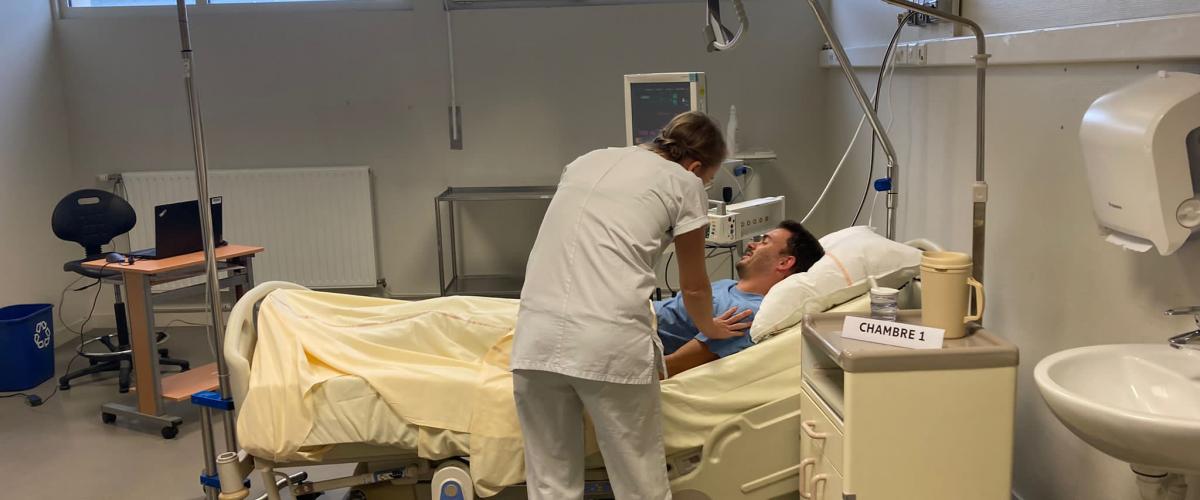b<>com continues its collaboration with Rennes University Hospital, exploiting the potential of its private 5G solution, *Dome*, in the hospital environment. Alongside their partners, they have set themselves the challenge of turning a “conventional” ward into a multi-bed intensive care unit (ICU) in the space of 24 hours, thanks to the deployment of a private 5G connectivity bubble.
A year after conducting the unprecedented simulation of a surgical procedure in a wireless operating room as part of the European research project 5G Tours, b<>com and its partners1 are now focusing on another major need highlighted by the pandemic: enabling healthcare facilities to respond rapidly in times of crisis and increase their resuscitation capacities.
To address this issue, b<>com has deployed its private 5G solution, *Dome*, in a hospital ward that is not designed to house an ICU2.
“An ICU has its own specific configuration, which distinguishes it from a ‘conventional’ care unit. This includes specific alarm reporting connection, a star-shaped layout around the central nursing station and the presence of interior windows looking into the patient rooms to guarantee patient supervision”.
Basically, the device takes the form of a small, easy-to-carry suitcase, containing a private 5G network core connected to a 5G antenna and routers to which the monitoring devices and cameras are connected.
This solution provides a connectivity bubble in a very short space of time, without any of the constraints usually associated with permanent deployment. This means that staff who are not telecommunications experts can adopt and learn to use this simple solution, which requires no external intervention.
24 hours is the time it now takes to set up an ephemeral resuscitation room in a location that is not designed for this purpose. In the past, it took about a week, so this time has been divided by 7.

“In this case, we have had to work on the hardiness of deployment: we have had to come up with a device that does not require external intervention and that can be deployed urgently, by teams who are not telecommunications experts. When installing this solution, you don't need to call on facilities management to come and mount equipment on the walls, for example. This saves the teams precious time”.
In addition to its rapid deployment, Dome's high degree of robustness guarantees the bandwidth needed to transfer medical data in a safe and reliable way, without any transmission interruption.
The device b<>com *Human Pose* also allows medical teams to monitor, in real time, the level of agitation of patients in ICU via a connected camera. The camera detects potentially risky body movements, such as hands approaching the patient’s face, and sends alarm signals to the central nursing station. Remote alarm reporting is also available on a 5G mobile phone. This means medical teams can react quickly in the event of an emergency.
These technological innovations will help the medical and biomedical teams at Rennes University Hospital to optimize their working methods, ensuring quicker and easier response to crisis situations.
In the coming months, the case study will also be exported outside hospital walls, with a second "field hospital" use case.
1 Engage 5G & Beyond project partners: b<>com, Rennes University Hospital, EDF, Eurecom, Nokia, Orange and Images et Réseaux
2 experiment conducted as part of the Engage 5G & Beyond research project funded by France 2030, this experiment took place on October 26 and 27 at Rennes University Hospital.




